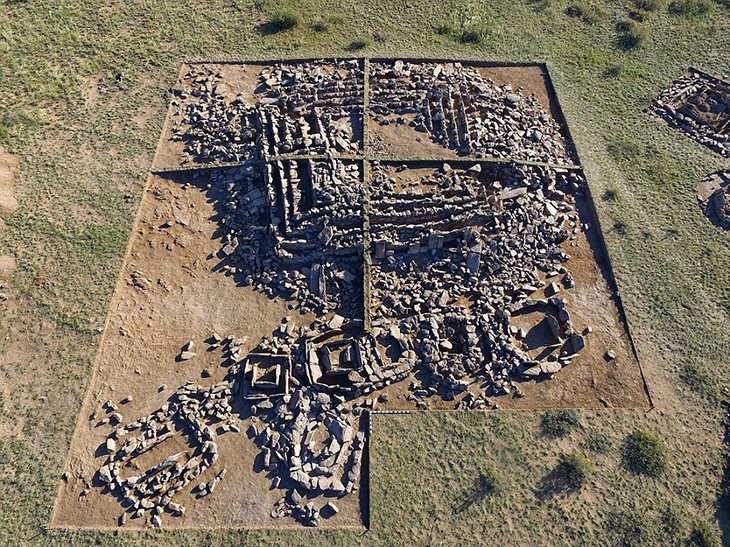
In an unexpected discovery, a massive hexagonal step pyramid has been unearthed amidst the lush grassy steppes of Kazakhstan.
This architectural marvel, typically associated with civilizations like Mesopotamian, Egyptian, Mesoamerican, Nubian, and some South and East Asian cultures, stands out as an anomaly in the nomadic horse-riding tribes of the steppe, who were not traditionally linked to monumental stone pyramids.
Surprisingly, this enigmatic structure traces its origins back 4,000 years to the Bronze Age. Spanning an impressive 500 square meters, this pyramid (or should we call it a “steppe pyramid”) has left archaeologists in awe, describing it as a “sophisticated and intricate construction.”
Situated in a place known as Kyrkungir near Toktamys village within the Abai region in the far east of Kazakhstan, this site first piqued curiosity in 2014 when it revealed ancient funerary mounds. These mounds yielded a treasure trove of burial artifacts, including ceramic vessels, food offerings, bronze beads, and various forms of jewelry.
The recent announcement by the Archaeology and Ethnology Department of the Eurasian National University has generated considerable excitement. The ongoing excavation of this pyramid marks a historic milestone, as it is the very first of its kind to be discovered on the vast Eurasian steppes.

“The steppe pyramid is built with great precision, it is hexagonal. There are thirteen meters and eight rows of stones between each face,” said Ulan Umitkaliyevin in a statement. He is the head of the department.
A significantly larger obsidian rock with a level surface was positioned in the corner of every side.
“It is a very sophisticated complex structure with several circles in the middle. The exterior walls of the structure of this complex are dominated by images of various animals, especially horses.”
These adornments suggest to the team that the pyramid might have functioned as a center for horse worship. This practice is believed to have taken place sometime between 1,000 and 200 years prior to the pyramid’s construction, profoundly impacting the way of life for steppe communities, ranging from ancient cultures like the Saka and Butai to later civilizations such as the Mongols in the Middle Ages.
Featuring six sides, each measuring 13.8 meters in length, the overall footprint of this structure would encompass approximately 500 square meters, equivalent to around 5,300 square feet—comparable to the size of a spacious American residence with a 3-car garage. The exact height of the pyramid remains uncertain.
Long appreciated in the historical record for their roles as conquerors, warriors, and traders, it seems there is still more to be learned of the people of the steppe.
What are your thoughts? Please comment below and share this news!
True Activist / Report a typo


